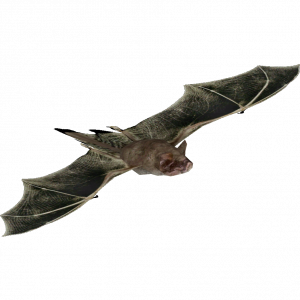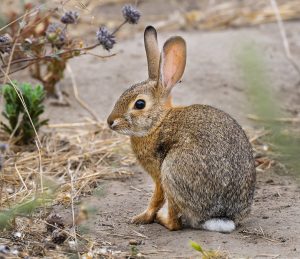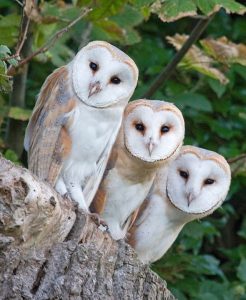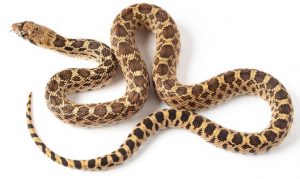To protect the environment and all of us creatures who live in it, please respect those who share our home.
Bats
 Did you know that we’re home to the fastest, most high-flying in the world? The Free-Tailed Bat can fly 60 miles per hour and at altitudes over 10,000 feet! Bats play an important part in our ecosystem. For many plants, bat pollination is a crucial part of their life cycle. Bats also take nectar and pollen from the plant’s stamens or pistils which help keep the plant healthy and happy. And bats often feed on insects that come to feast on these plants as well, providing important insect management that helps humans!
Did you know that we’re home to the fastest, most high-flying in the world? The Free-Tailed Bat can fly 60 miles per hour and at altitudes over 10,000 feet! Bats play an important part in our ecosystem. For many plants, bat pollination is a crucial part of their life cycle. Bats also take nectar and pollen from the plant’s stamens or pistils which help keep the plant healthy and happy. And bats often feed on insects that come to feast on these plants as well, providing important insect management that helps humans!
 Black widow spiders….
Black widow spiders….
- Rarely bite humans, but if they do, seek help immediately
- Bites don’t usually kill. In 2013, there were 1,866 black widow bites reported to the American Association of Poison Control Centers, but only 14 of these resulted in severe symptoms. None resulted in death.
- Are awesome!The tensile strength of a female black widow’s silk is the strongest known substance in nature.
See Black Widow Spiders: Facts vs. Fears for more information.
Rabbits
 Rabbits can be managed by using humane, non-toxic exclusion methods. These include adding physical garden barriers, protecting individual plants, propogating plants that rabbits don’t like, and removing potential nesting spots. One source of more information and how-to’s is at Garden Design.
Rabbits can be managed by using humane, non-toxic exclusion methods. These include adding physical garden barriers, protecting individual plants, propogating plants that rabbits don’t like, and removing potential nesting spots. One source of more information and how-to’s is at Garden Design.
Raptors: Expert rodent handlers
 Rodenticides (e.g. rat poison) are ineffective in dealing with rodents and disastrous to the food chain. Nature provides a better way: natural predation. A Barn Owl (pictured here) will eat 4-6 sma
Rodenticides (e.g. rat poison) are ineffective in dealing with rodents and disastrous to the food chain. Nature provides a better way: natural predation. A Barn Owl (pictured here) will eat 4-6 sma
ll rodents a night. A pair of nesting Barn Owls feeding a family of six will consume almost forty rodents per night. One poisoned rodent can kill an entire family of owls. Dogs and cats on your property can be rodent deterrents, but some predators can endanger pets and people, so use caution.
The best way to deal with rodents are through exclusion methods and CO2 traps.
- Keep yards free of food. Secure trash bins, use squirrel-proof bird feeders, and clean up fallen food and seeds daily. For information about the best seed and feeders to attract the birds you’d like, contact Scott Logan of Wild Wings Ecology at 818.995.5703. To help remove unwanted food, the volunteer TOT Picking Posse will with your permission visit your home, pick the fruit, and make the surplus you don’t need available to the community. To request this service, contact Mary at 424.259.2407.
- Seal points of entry into buildings. Poison also does not prevent re-infestation, as rodents will return to areas they can access. Services such as Humane Wildlife Control and Rodents Stop provide home sealing and humane non-poison removal. It is illegal to capture and release rodents elsewhere, and the risk of using traps that catch but don’t kill is that neglected traps are a health hazard and attract predators.
- If needed, use CO2 cartridge traps. CO2 Automatic Traps are used in our TOT common areas and managed by our vendor, Cragoe. These traps use no toxins or electricity, are safe around pets, and are certified humane by the National Animal Welfare Advisory Committee (NAWAC) and U.S. Department of Agriculture (USDA). Cragoe will provide the CO2 and service for individual homeowners. The charge is $200 to set up per automatic trap and $25 per month each to maintain. To request this service, please call them directly at 805.446.7003.
Snakes
Please be mindful of snakes, but don’t kill them: they help control the rodent population. Rattlesnakes strike only as a defensive mechanism to protect themselves: they won’t attack unless provoked. They usually give warning by rattling their tail. When walking, keep you and your pet away from the planted edges of paths and streets.
 Gopher snakes (pictured) are harmless but are often mistaken for rattlers. They are slimmer and longer, and have no rattles, but can imitate rattlesnakes by “rattling” their tails against the ground in an attempt to fool predators.
Gopher snakes (pictured) are harmless but are often mistaken for rattlers. They are slimmer and longer, and have no rattles, but can imitate rattlesnakes by “rattling” their tails against the ground in an attempt to fool predators.
To remove and relocate a snake, contact Dan MacNeil 310.455.2234 (H) or 818.730.7379 (C), Steven Nightser 424.333.1365, Doug Allan 310.579.7667, or George Lopez 818.629.9358.
or the Onsite Manager (see Management). If bitten, call 911 or get to an emergency room immediately. Remain calm, take note of the snake’s appearance, remove any jewelry or tight clothing near the bite, move the limb as little as possible, and, if you can, position yourself so that the bite is below the level of your heart (see Be Rattlesnake Safe, California Department of Fish & Wildlife).
Termites
Termites will consume any material that contains cellulose, and since wood contains a lot of it, termites devour wood voraciously. If a tree falls in the forest and no one is around to hear it, a termite still knows about it. Here are ways to avoid infestations.
- Remove dead brush, decaying vegetation, tree stumps, scrap wood, and waste lumber.
- Limit wood-to-ground contact (e.g. use concrete supports). If necessary, use treated lumber.
- Remove any standing water and fix water leaks around your home.
- Mulch is best used in areas not directly adjacent to the walls of your home.
More information about poison use
All poisons–including rodenticides, pesticides and herbicides–move through the food chain to birds of prey and oth er mammals and kills them (including mountain lion P-41, shown here).
er mammals and kills them (including mountain lion P-41, shown here).
The Santa Monica Mountains Fund and Poison Free Malibu teach about the dangers of rodenticide to urban wildlife. You can take the pledge to #BreakThePoisonChain#saveLAcougars. Our vendors provide information on the products and methods used to manage our property, which is available to residents by contacting the Onsite Manager (see Management).